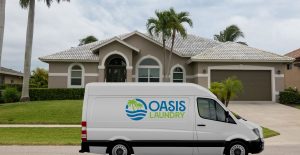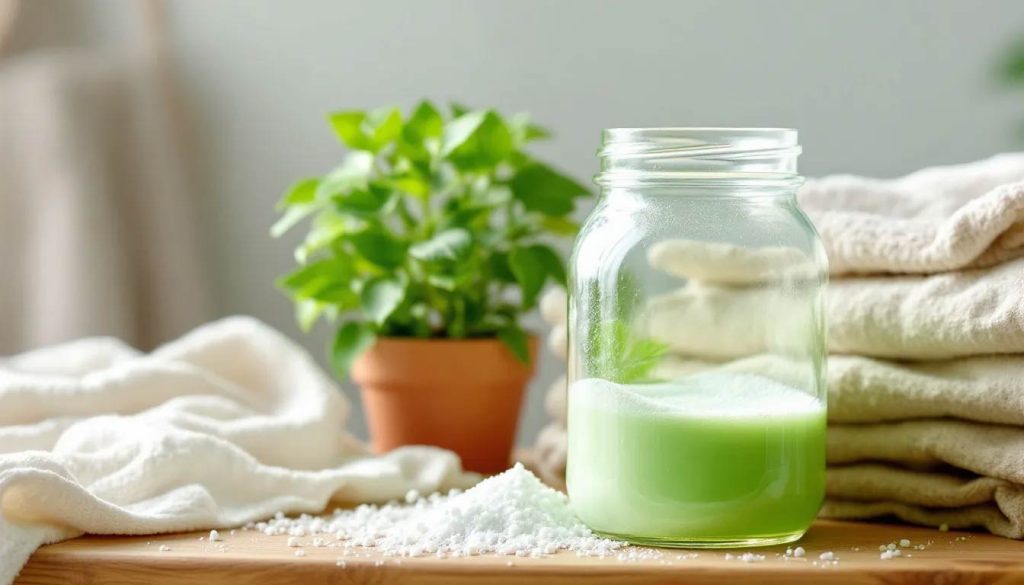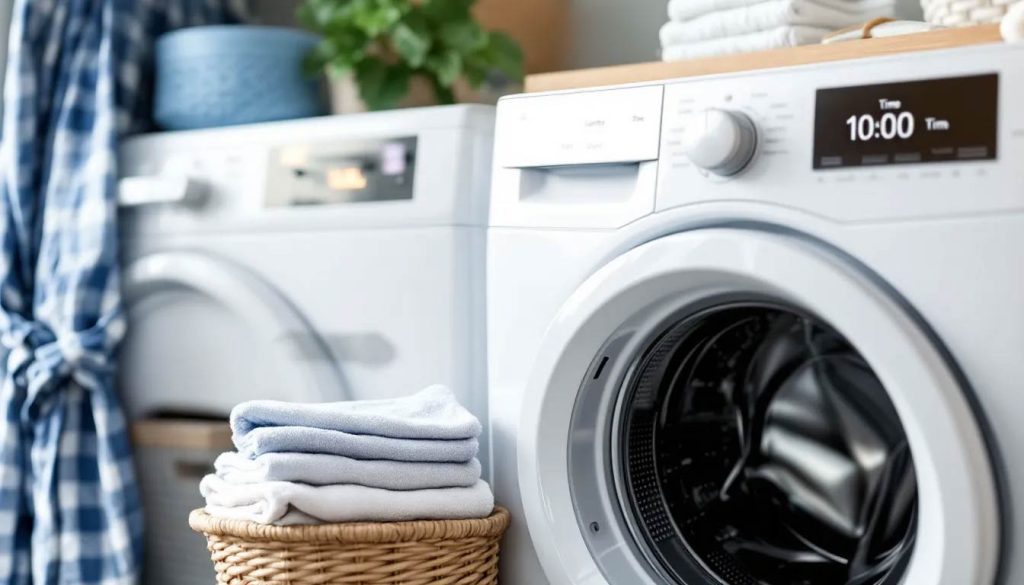At Oasis Laundry, we’re committed to helping you reduce your environmental footprint through sustainable washing practices.
Laundry is a daily necessity, but it doesn’t have to come at a high cost to our planet. By making simple changes to your laundry routine, you can significantly decrease your water and energy consumption while minimizing harmful chemical use.
In this post, we’ll explore practical ways to make your laundry more eco-friendly, from choosing green detergents to adopting water-saving techniques.
Eco-Friendly Laundry Products: A Sustainable Choice
At Oasis Laundry, we believe that selecting the right laundry products plays a key role in reducing environmental impact. Natural and biodegradable detergents offer numerous benefits over conventional options. These eco-friendly alternatives contain no harsh chemicals, which makes them safer for both your skin and the environment.
The Power of Plant-Based Detergents
Plant-based detergents clean clothes effectively while being gentler on the planet. They decompose more easily in water treatment systems, which reduces pollution in our waterways. A study by the University of Washington found that top-selling laundry products emitted dozens of different chemicals.
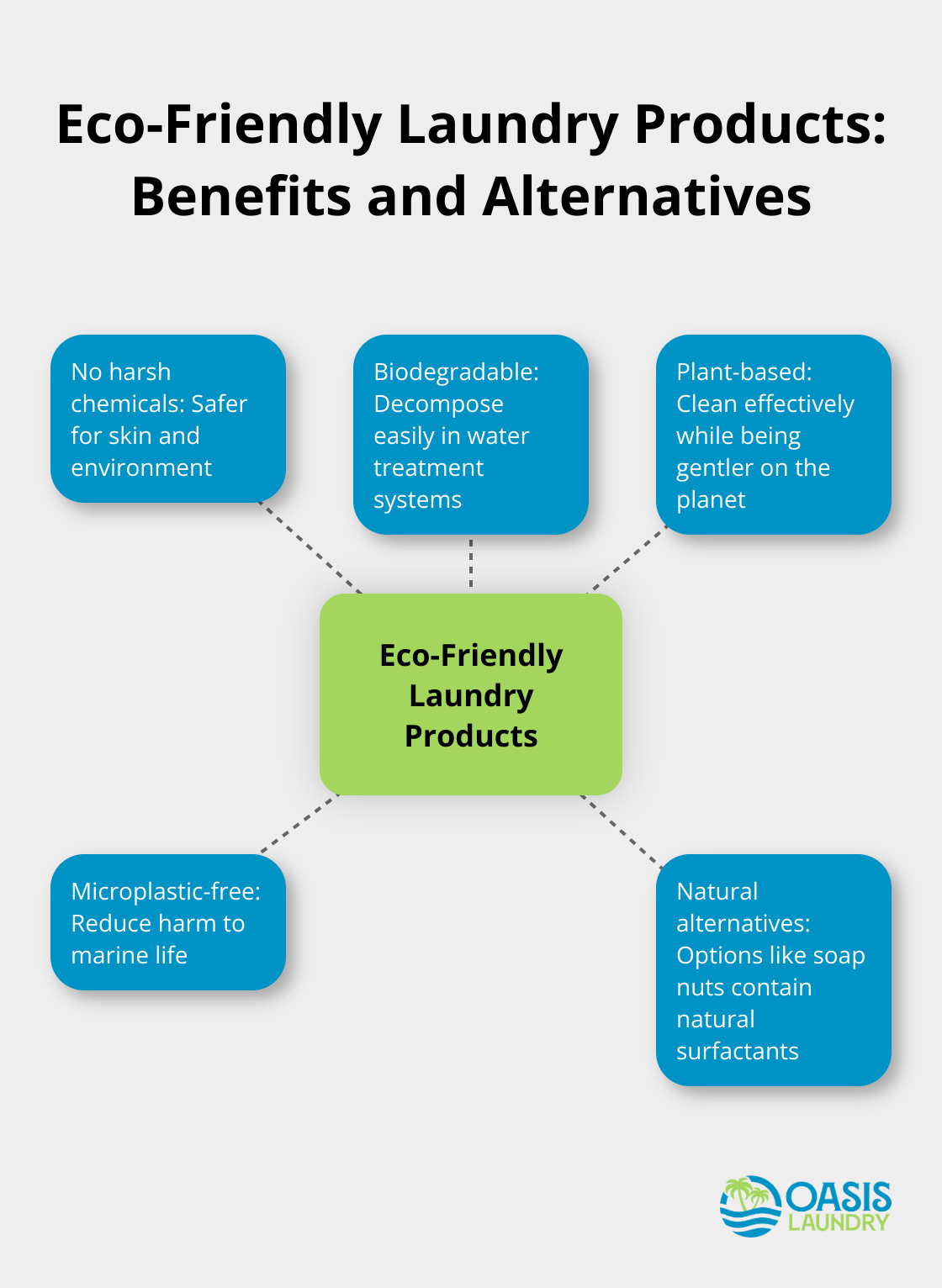
DIY Detergent: A Sustainable Solution
Making your own detergent takes your eco-friendly laundry routine a step further. A simple recipe includes mixing equal parts washing soda, borax, and grated castile soap. This homemade solution costs less and eliminates the need for plastic packaging.
Microplastic-Free Washing
Microplastics in laundry products pose a significant environmental concern. These tiny plastic particles end up in our oceans and harm marine life. Choose detergents that explicitly state they contain no microplastics. Better yet, try soap nuts, a natural alternative that contains saponin (a compound that acts as a natural surfactant).
Eco-Friendly Fabric Softeners
Traditional fabric softeners often contain harmful chemicals that can irritate skin and pollute water sources. Instead, use white vinegar as a natural fabric softener. It costs less, works well, and leaves no residue on your clothes.
These simple switches in your laundry routine will significantly reduce your environmental impact. Every load of laundry presents an opportunity to make a positive change for our planet. Now, let’s explore how energy-efficient washing techniques can further enhance your eco-friendly laundry practices.
How to Wash More Efficiently
At Oasis Laundry, we always look for ways to make laundry more energy-efficient. Let’s explore some practical techniques that can significantly reduce your energy consumption and environmental impact.
The Power of Cold Water Washing
Cold water washing transforms energy-efficient laundry. Cold-water washing means clothing is less likely to shrink or fade and ruin clothes. Cold water can also reduce wrinkles, which saves energy costs (and time). Modern detergents work effectively in cold water, so you don’t sacrifice cleanliness for efficiency.
To maximize the benefits of cold water washing:
- Use a detergent specifically formulated for cold water
- Pre-treat tough stains before washing
- Separate heavily soiled items from lightly soiled ones
Full Loads for Maximum Efficiency
Running your washing machine with full loads saves energy and water. A full load uses the same amount of energy as a partial load but cleans more clothes. The key is to fill the drum without overpacking it. Leave enough space for clothes to move freely for optimal cleaning.
For those times when you can’t wait for a full load, use the appropriate water level setting for the size of your load. Many modern washing machines have sensors that automatically adjust water levels, but if yours doesn’t, select the right setting manually.
High-Efficiency Washing Machines: A Smart Investment
If you’re in the market for a new washing machine, consider a high-efficiency (HE) model. ENERGY STAR certified clothes washers use about 20% less energy and about 30% less water than regular washers.
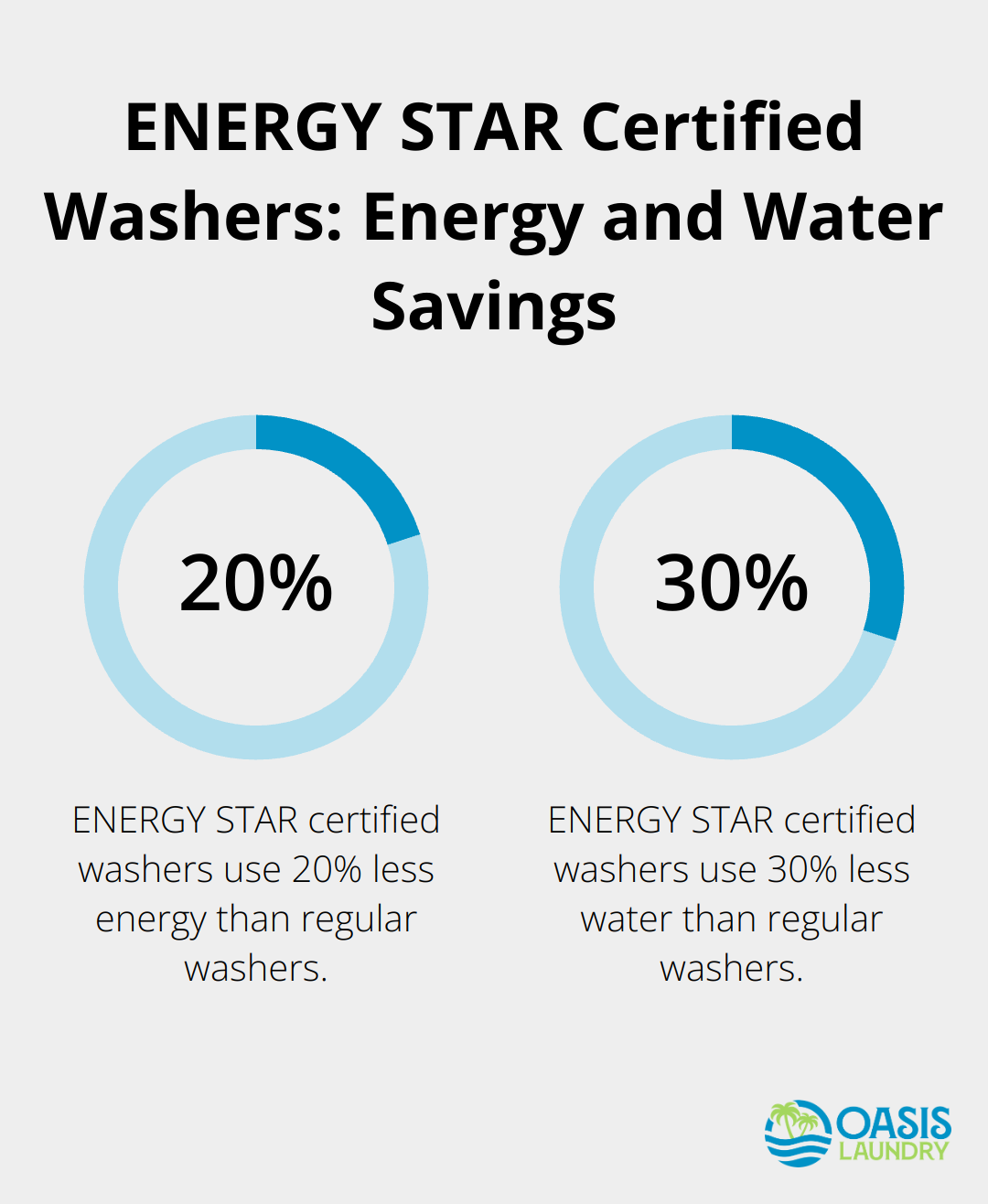
Key features to look for in an HE washing machine include:
- Multiple wash cycle options for different fabric types
- Automatic load sensing to adjust water levels
- High spin speeds to extract more water, reducing drying time
While HE machines may have a higher upfront cost, the long-term savings on energy and water bills make them a smart investment. Plus, they treat your clothes more gently, potentially extending their lifespan.
Optimizing Your Laundry Schedule
Plan your laundry schedule strategically to maximize efficiency. Try to do laundry during off-peak hours (typically late evening or early morning) when energy demand is lower. This not only reduces strain on the power grid but can also save you money if your utility company offers time-of-use rates.
Additionally, consider grouping similar fabrics together. This allows you to use the most appropriate wash cycle for each load, optimizing both cleaning effectiveness and energy efficiency.
Now that we’ve covered energy-efficient washing techniques, let’s explore how water conservation in laundry can further reduce your environmental footprint.
How to Save Water While Doing Laundry
At Oasis Laundry, we understand the importance of water conservation in laundry practices. With freshwater becoming an increasingly scarce resource, it’s essential to adopt water-saving techniques in our daily routines. Let’s explore some practical ways to reduce water consumption in your laundry process.
Maximize Water Efficiency in Your Washing Machine
Modern washing machines come equipped with water-saving features that can significantly reduce your water usage. Look for machines with load sensing technology, which automatically adjusts water levels based on the size of your laundry load. ENERGY STAR certified washers use 14 gallons of water per load, compared to the 20 gallons used by a standard machine.
If you use an older machine, you can still conserve water. Select the appropriate water level for each load and avoid high heat in the dryer. Choose low or medium heat settings instead.
Harness the Power of Rainwater
Collecting rainwater for laundry use reduces your reliance on municipal water supplies. A simple rain barrel system can capture hundreds of gallons of water annually, depending on your local rainfall. This collected rainwater is soft and free from the minerals found in hard water, making it ideal for laundry use.
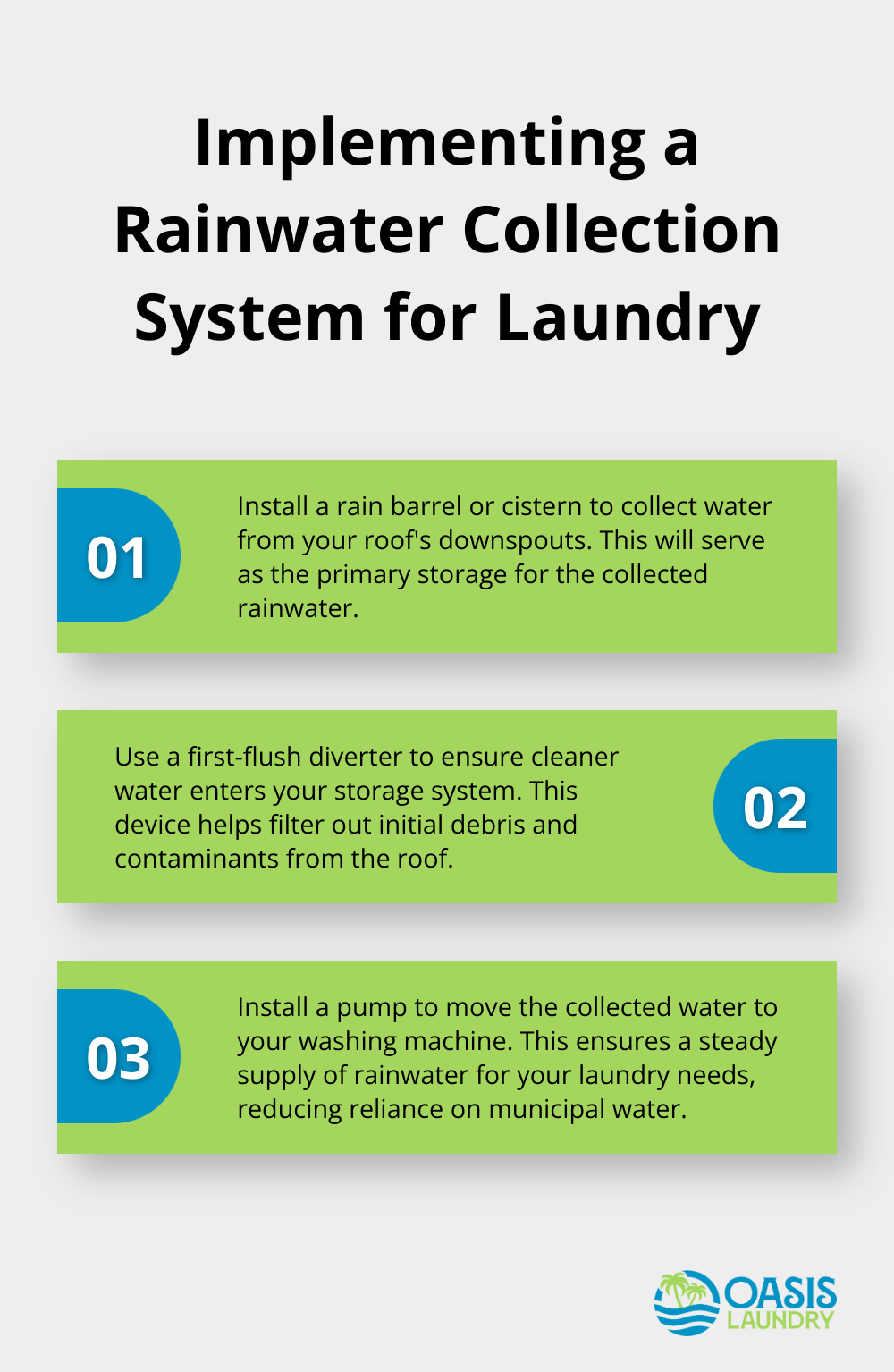
To implement a rainwater collection system:
- Install a rain barrel or cistern to collect water from your roof’s downspouts
- Use a first-flush diverter to ensure cleaner water enters your storage system
- Install a pump to move the collected water to your washing machine
The initial setup requires some investment, but the long-term water savings and reduced utility bills make it a worthwhile consideration.
Give Laundry Water a Second Life
Greywater reuse is another effective method to conserve water. Laundry greywater (the wastewater from washing machines) can safely irrigate landscapes if you use biodegradable, phosphate-free detergents.
A simple greywater system can divert water from your washing machine directly to your garden. However, it’s essential to check local regulations before implementing such a system, as laws regarding greywater use vary by location.
When you use greywater for irrigation:
- Avoid using it on root vegetables or plants you intend to eat raw
- Rotate your watering areas to prevent soil saturation
- Use it immediately rather than storing it to prevent bacterial growth
These water-saving strategies can significantly reduce your laundry’s water footprint. Every drop counts in our collective effort to conserve this precious resource.
Final Thoughts
Sustainable washing practices are not just a trend; they are a necessity for our planet’s future. Every small change in our laundry habits adds up to a significant impact on the environment. We can reduce our carbon footprint, conserve water, and protect aquatic ecosystems through simple adjustments to our washing routines.
At Oasis Laundry, we strive to make sustainable washing accessible to everyone. Our eco-friendly laundry solutions cater to both residential and commercial clients, offering convenience without compromising environmental responsibility. We provide tailored services to meet various needs while minimizing environmental impact (for busy professionals, growing families, and business owners alike).
You can start implementing eco-friendly laundry practices today. Switch to cold water washing, use natural detergents, or collect rainwater for your laundry. As you observe positive changes in your utility bills and clothing quality, you’ll feel motivated to do more for the environment.
